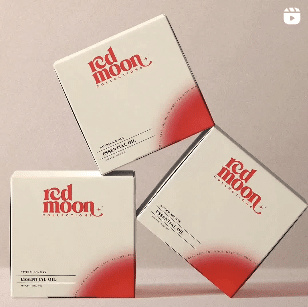Developing a brand name for your organization or product is a crucial step that should be carefully planned and executed.
However, in the fast-paced world of business, surprises are common, and even well-planned timelines can go sideways. An urgent need to launch a product, market demands, trademark issues, PR challenges, startup competition, and more can demand an immediate need for a new name. So, how can you speed up the naming process?
Here are ten valuable tips to streamline your naming journey and find the perfect name quickly. While this guide is aimed at agencies and naming consultants, these tips are equally beneficial for internal teams and independent business owners looking to expedite their projects.
Table of Contents
1. Make sure the time constraints are real
Work backward from the tradeshow, launch date, or other target event that’s functioning as your deadline, and establish a realistic schedule for the naming process. You might find that there is more time than initially thought and the project can follow a standard timeline.
It is common for clients to feel a sense of urgency. Getting a product or company ready for the public involves dozens of moving parts, so it’s understandable that managers want each step done ASAP. It’s equally common, however, for clients to discover additional time once you help them map out the actual deadlines.
2. Optimize project planning
Although it’s certainly not the sexiest aspect of any project, planning is critical to a successful outcome whether you have all the time in the world or two weeks. Flex those planning muscles hard even before the project is greenlit, and be sure to:
- Stick to only one round of name development. For most naming agencies, the standard process includes two rounds—the first explores widely, and the second uses client feedback gained from the first to narrow directions and go deep. However, for tight turnarounds, you can streamline to a single round of development with a healthy review of sample names during the briefing to understand client/team preferences (see tip #6).
- Insist the client assemble a small group of decision-makers. Keep the naming team to a few motivated members who’ve agreed to give feedback quickly, and ensure that anyone who has the authority to reject a name is involved from the beginning. To help ensure accuracy and internal acceptance of the name later on, gather input for the brief from other important stakeholders through a questionnaire, but avoid making decisions by large committee.
- Line up your creative team (and everyone else) in advance. Ensure the whole team is committed to the schedule and can hit the ground running as soon as the brief is drafted.
3. Ensure crystal-clear communication (and limit the number of meetings)
Set expectations clearly from the start. Make sure all key stakeholders comprehend the process (and are committed to it) and the anticipated outcome. Quickly finalize the SOW (scope of work) and meet with the client team only for the briefing and name presentation. All other matters can be addressed via short emails (emphasis on short).
4. Ask for concise, relevant client materials
Ask your client to limit background materials to strictly what’s necessary and send them all together. You don’t need five 40-page PowerPoint decks.
Guide the client on the materials that will be most helpful for naming, such as a summary of the brand’s context and strategy.
- Context analysis: Concise information about the market, target customers, and competitors provides crucial insights for crafting a brand name that resonates with the target audience and stands out in the market.
- Brand strategy: Reviewing a summary of the brand’s essence (purpose, vision, mission, values), identity (including history, personality, tone of voice), positioning, and architecture will better enable you to align the name candidates with the overall brand strategy. A highly scannable summary of brand elements can be dropped straight into your brief, saving time there, and will be referenced by your creative team throughout development.
5. Keep your brief, brief
Keep your creative brief short, practical, and to the point:
- Limit background on the project to context that will inform creative development.
- Use bullet points for easy scanning and quick reference during the creative process.
- Clearly present naming parameters to focus name exploration and guide the more ineffable aspects of creativity.
- Outline all specific constraints, including name length, a requirement for an exact .com domain name, trademark regions, and the languages spoken by the target audiences.
- Limit messaging to 4 primary and 2–3 secondary “semantic buckets”. Focusing on fewer messages/themes enables your creative team to dig deeper with each. Note, though, that messaging parameters should be viewed as a soft boundary, particularly for projects where tone and personality are even more important than message.
- Define the tone and personality using clear language and examples if it makes sense (if the brand were a person, how would you describe them?).
- Provide practical construction guidelines (actual words/coined words, long/short, compound/phrase).
- Spell out the client’s preferences for intuitiveness of meaning (you get the intended message instantly or get it after some explanation) and whether functions or benefits should be directly communicated, suggested, or not expressed (as in an abstract name such as Kodak).
6. Use strategic sample names to determine client preferences
In the realm of company naming, focusing on tone and personality is often more crucial than the message itself. Sample names play a vital role in this process, especially for quick naming projects.
Review a broad range of sample names with the client based on their message, tone, structure, intuitiveness, and sound. While using existing brand names as samples is acceptable, avoid selecting names of direct competitors or well-known brands. It can be challenging for some clients to separate their feelings for the brand as a whole from their feelings for the brand name as a name. Therefore, use caution when choosing samples in order to evoke the most useful feedback. Knowing that your client admires names like Apple and Google is not likely to provide substantial insight.
If feasible, present some rough custom creative ideas for the name you are developing. Even if none are perfect, this approach will help you grasp what resonates best with the client.
7. Develop name and logo simultaneously
Save time by following parallel paths to develop the name and logo simultaneously. We don’t recommend this shortcut unless you are extremely strapped for time—it’s always best for the design to spring from the name—but in a pinch, you can develop the naming and design brief together.
Get feedback on sample designs, color palettes, and fonts to inform your design parameters. Identifying tone and personality is especially important.
8. Brainstorm with generative AI
Use generative AI such as ChatGPT, Gemini, or Claude for vocabulary, ideas for areas of exploration (expected and unexpected metaphors), and actual name candidates. Here’s some advice on how to leverage these powerful tools for naming. Even if the output is not name-worthy, it will spark ideas. Name generators that use AI, such as Namelix and Shopify’s business name tool, can similarly save you some legwork.
To best leverage these powerful tools for naming, you’ll need to experiment with each one and what types of prompts produce substantial results. It may take some time to become proficient, so begin exploring this world before you’re under a deadline, if you can.
9. Explore brandable domain name sites
For many brands, having a .com domain name is crucial for establishing credibility, trust, and a professional online presence. Although other TLDs (top-level domains) are becoming popular, such as .ai, .io, and .co, .com is still king, especially with enterprise and consumer-facing brands.
Sites such as Brandbucket, Brandpa, Brandnic, The Catchword Accelerator, Squadhelp, and a growing number of others own brandable .com domain names that can be yours for the right price. With options suitable for every industry and styles ranging from intuitive portmanteaux (such as Alsight and Maxifide) and compounds (FreshFare, InsightUp) to evocative coinings (Wunderkins, Jetic), there’s truly something for everyone. Some of these names might work for you and fall within your budget. Remember, though, that domain name availability does not guarantee trademark availability.
10. Don’t shortcut trademark and cultural screening
You can cut some steps to speed up your process, but trademark screening (and cultural/linguistic screening for international brands) is not one of them. To ensure the fastest turnaround possible, determine the trademark regions, trademark classes, and the most common languages for your audience at the start.
Confirm resources for TM prescreening and cultural/linguistic screening that can follow your schedule, and ensure the client has notified their legal team about the accelerated full trademark review. When selecting names for that final screening, don’t fall in love with one name; fall in like with a half dozen so that at least one will survive.
Developing a memorable, engaging, on-brand, and ownable name will always take some time, but these hacks will help you get there faster. Good luck!
Image credits
- Cover image by Brands & People
















Obviously the insights of someone who has spent years in the naming trenches. Everything is applicable. Thanks for sharing!